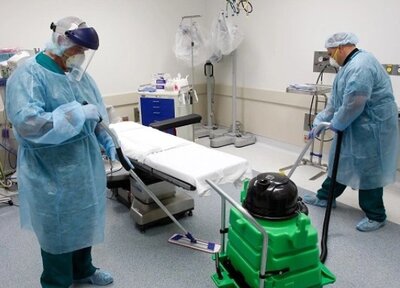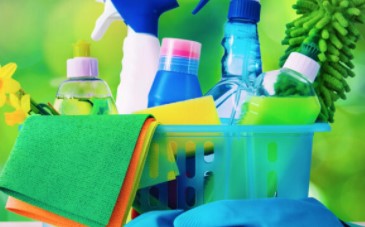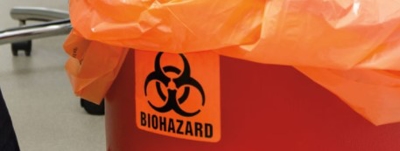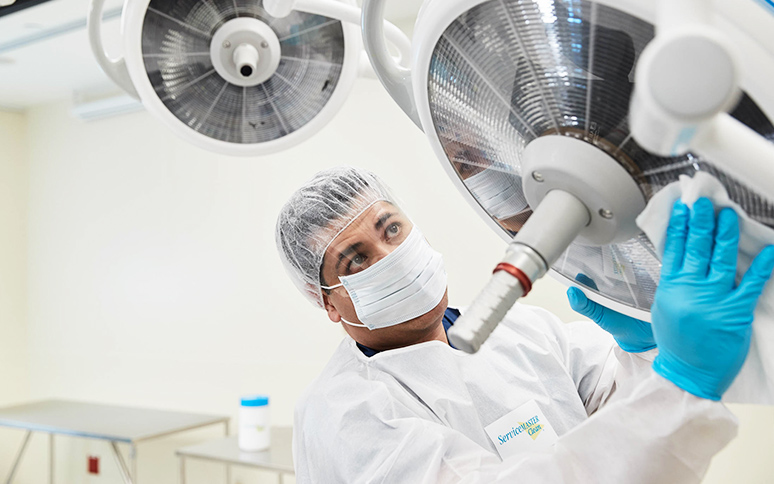Hospital Infection Control Guidelines: How to Protect Your Patients from HAIs
A healthcare-associated infection (HAI) develops as a secondary infection when a patient is already hospitalized for a different ailment. Affecting the blood, urinary tract, or surgical site, these infections can be contracted in a wide variety of ways, whether from careless use of equipment, improper disinfection, or patient-to-patient contact. In fact, the Centers for Disease Control and Prevention (CDC) report that every day, about one out of 25 hospital patients has at least one healthcare-associated infection.
While HAIs are largely preventable, patients continue to contract infections in hospital settings. In order to help safeguard patients' health, lower healthcare and medical malpractice costs, and improve patient retention, you need to understand the most common types of HAIs and the best hospital infection control guidelines for helping to prevent these devastating infections.
Types of Healthcare-Associated Infections
To prevent HAIs, you first need to understand what they are. Although HAIs are loosely defined as infections caught in a medical facility, they are predominantly contracted from invasive devices used in healthcare procedures or surgeries. Ventilators and catheters are two common culprits. According to the CDC, these are the four most common HAIs in America:
Catheter-associated urinary tract infections (CAUTI). The most prevalent type of HAI, these infections are attributed to urinary catheter usage, being more noteworthy in cases of prolonged use. Approximately 75 percent of UTIs that develop during a hospital stay are related to catheters, and these devices are administered to 15-25 percent of patients at some point during their hospitalization.
Central line-associated bloodstream infections (CLABSI). A central line is a large tube attached to a major vein in a patient's neck, groin, or chest. Central lines are used for the long-term transmission of fluids or medication. Infections transmitted though the contamination of a central line result in thousands of deaths and billions of dollars in added healthcare costs each year.
Surgical site infections (SSI). Post-operation, infections can develop around the surgical site. These infections range in severity, depending on whether they affect only the skin, or have reached the tissues, organs, or surgical implants. Skin-only infections are considered superficial in nature, while deeper infections pose increased risks.
Ventilator-associated pneumonia. This type of pneumonia can occur in patients who require a ventilator for help breathing. Since the ventilator pumps oxygen into a patient's mouth or nose, germs that contaminate the apparatus can travel into the lungs and cause an infection.
Hospital Infection Control Guidelines
Maintaining vigorous standards of cleaning, disinfecting, and sanitizing is vital in every domain of hospital care. While you should consult the CDC's complete list of hospital infection control guidelines, the most integral steps are outlined here.
- Staff must clean their hands with antimicrobial soap and wear protective clothing, especially during surgeries. Prior to operations, patients must be given the appropriate antibiotics, and surgery sites need to be kept clean at all times.
Medical equipment, such as catheters and ventilators, should be removed at the earliest possible time. Long-term usage increases the risk of infection. This equipment also requires regular cleaning and must be sanitized or replaced between patients.
Healthcare professionals should teach patients how to be "safe patients," as the CDC calls them. Safe patients help to reduce HAIs by following basic guidelines, like washing their hands and becoming informed about HAI warning signs. It's imperative that patients understand post-surgery symptoms that could signal an HAI, including fever, swelling, pain, and diarrhea.
If you need help properly cleaning and disinfecting your facility to help control infections, contact the experts at ServiceMaster Clean. Our patient-centered environmental cleaning processes follow industry cleaning protocols and requirements to help keep your staff and patients protected. With over 60 years’ experience, we've developed revolutionary ways to clean, , and disinfect medical facilities on a schedule and budget that work for you.









